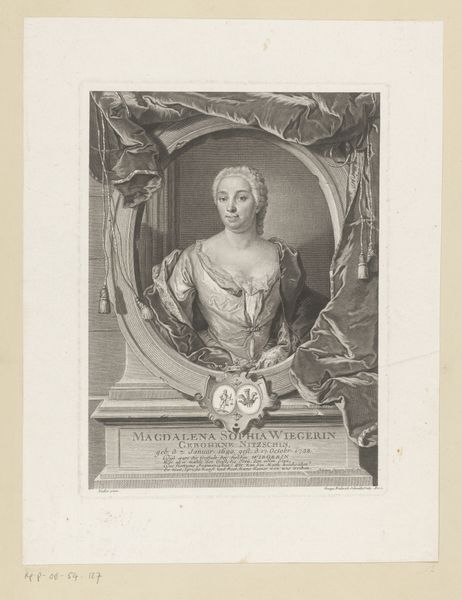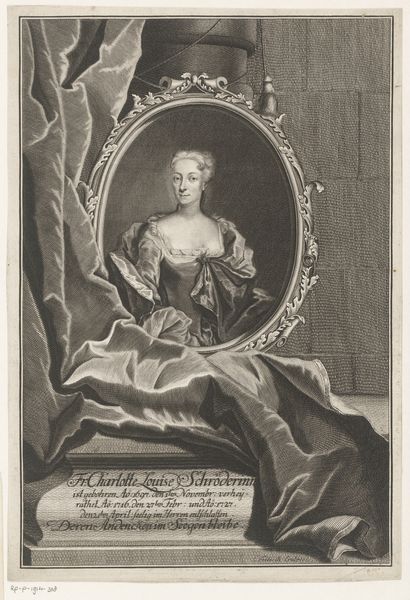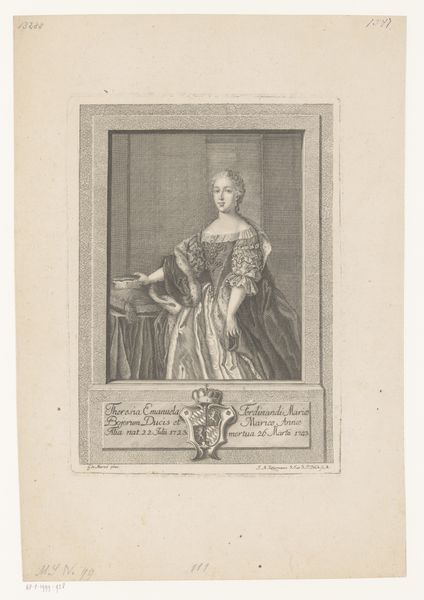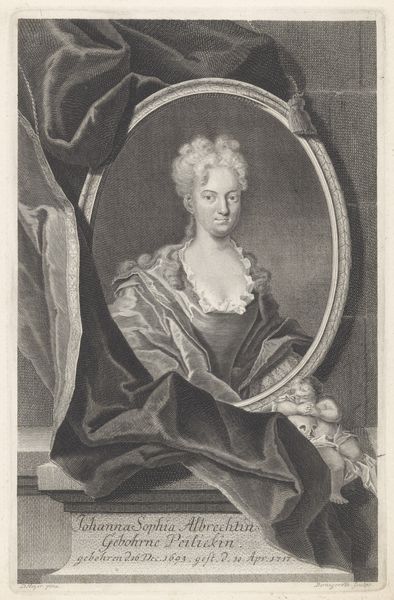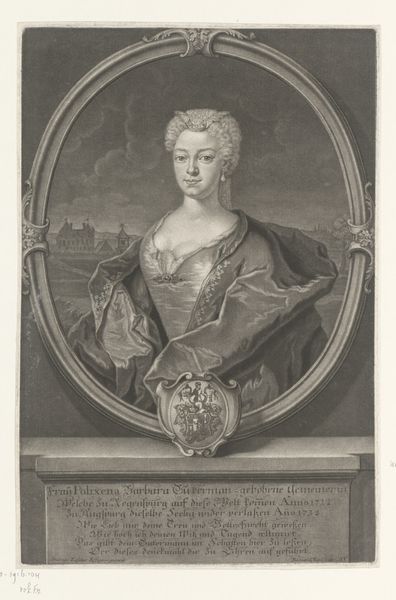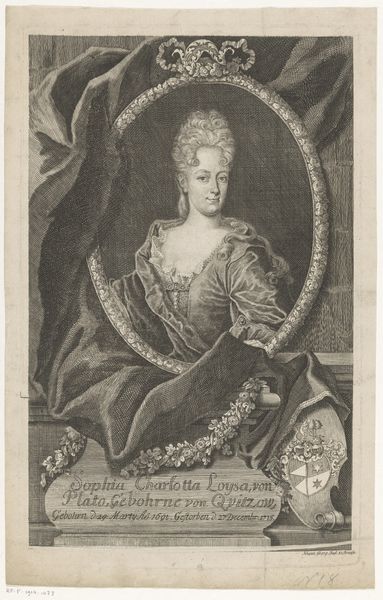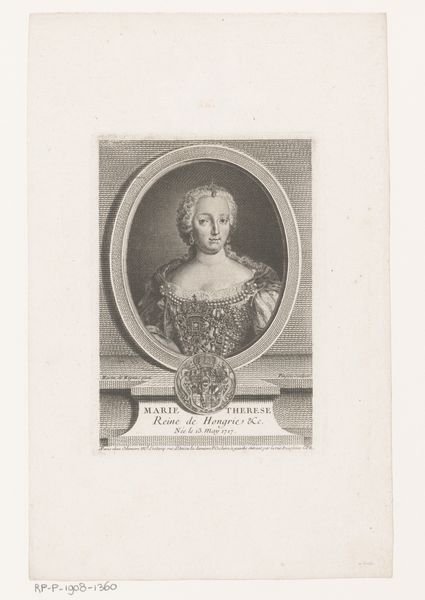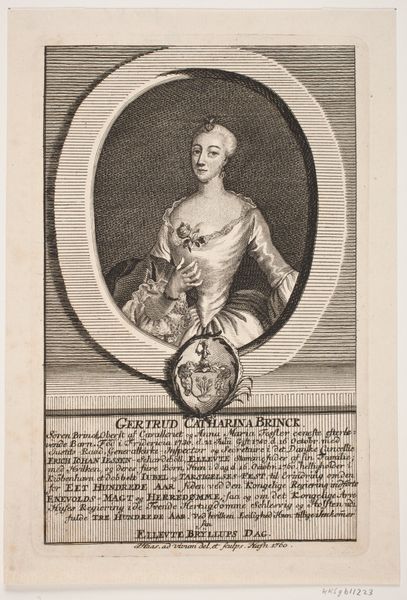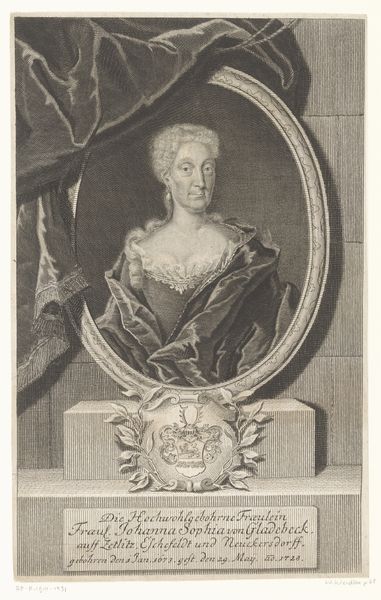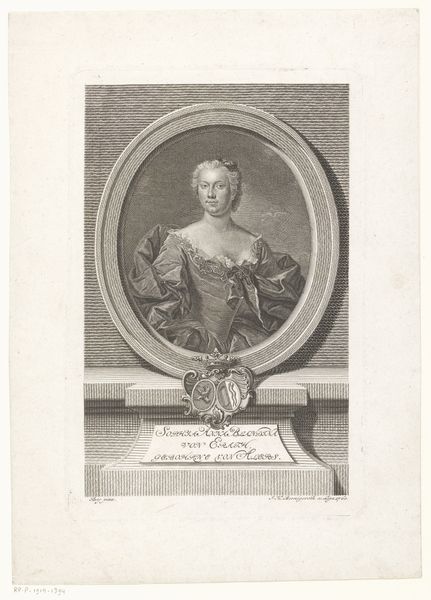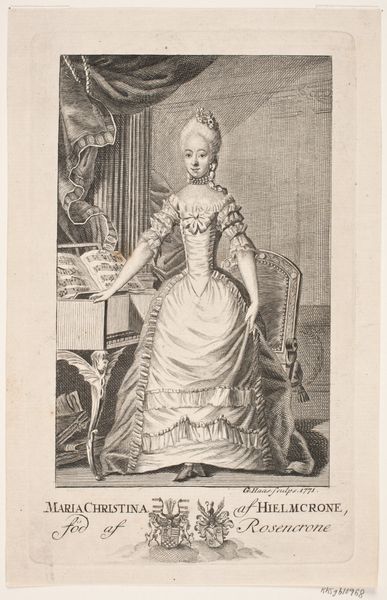
print, engraving
#
portrait
#
baroque
# print
#
figuration
#
history-painting
#
engraving
Dimensions: height 325 mm, width 199 mm
Copyright: Rijks Museum: Open Domain
Curator: Before us is a print from 1729 held at the Rijksmuseum, "Portret van Maria Elisabeth von Seidel," crafted by Johann Wilhelm Windter. It's an engraving, fitting into that established tradition of Baroque portraiture. Editor: It feels instantly stiff and formal. The frame-within-a-frame, the architectural background, it's all very calculated to project status, isn’t it? What material realities underpinned this image's construction? Curator: Indeed. Engravings such as these functioned as critical tools for disseminating images of power and influence. This allowed for a relatively widespread circulation of images amongst various audiences beyond the elite circles who had access to oil paintings. Editor: So, considering that broad circulation, how much time do you suppose Windter put into the details versus speeding things up for a broader print run? And what paper stocks were common? How might those details reflect access and availability? Curator: The level of detail, I think, speaks to a patron or commissioning body with certain expectations regarding quality and presentation. Consider the delicate lace, for instance. That necessitates a highly skilled engraver and more time spent on the plate. We see the expectation of artistry aligning with the expectations of the sitter's social standing. Editor: And what about the labor involved in distribution? Did it reach far and wide, or were there choke points dictated by wealth and access to postal systems? Because, beyond the subject, distribution systems were power systems of their own. Curator: That's precisely the point. This wasn't just a simple reproduction, it was a construction of identity distributed through very controlled channels, mainly amongst court circles, academies, and wealthy collectors. The very act of commissioning and owning such a portrait reinforced a particular socio-political order. Editor: So, even an "accessible" medium like print still reinforced a closed system of power and privilege, not through artistry but through the grit and gears of getting ink on paper and paper into hands. The cost, labor, and delivery cemented its power. Curator: Exactly. By understanding the historical context and social function of such images, we can unpack not only the identity being presented but the dynamics of power that governed its creation and dissemination. Editor: So next time I look at a piece of old artwork, beyond the strokes and flourishes, I’ll try to think about the whole economic and material system that made that artwork even possible to behold. Curator: Yes, and hopefully gain a bit more understanding of who had the right to behold such things, and to what effect.
Comments
No comments
Be the first to comment and join the conversation on the ultimate creative platform.
